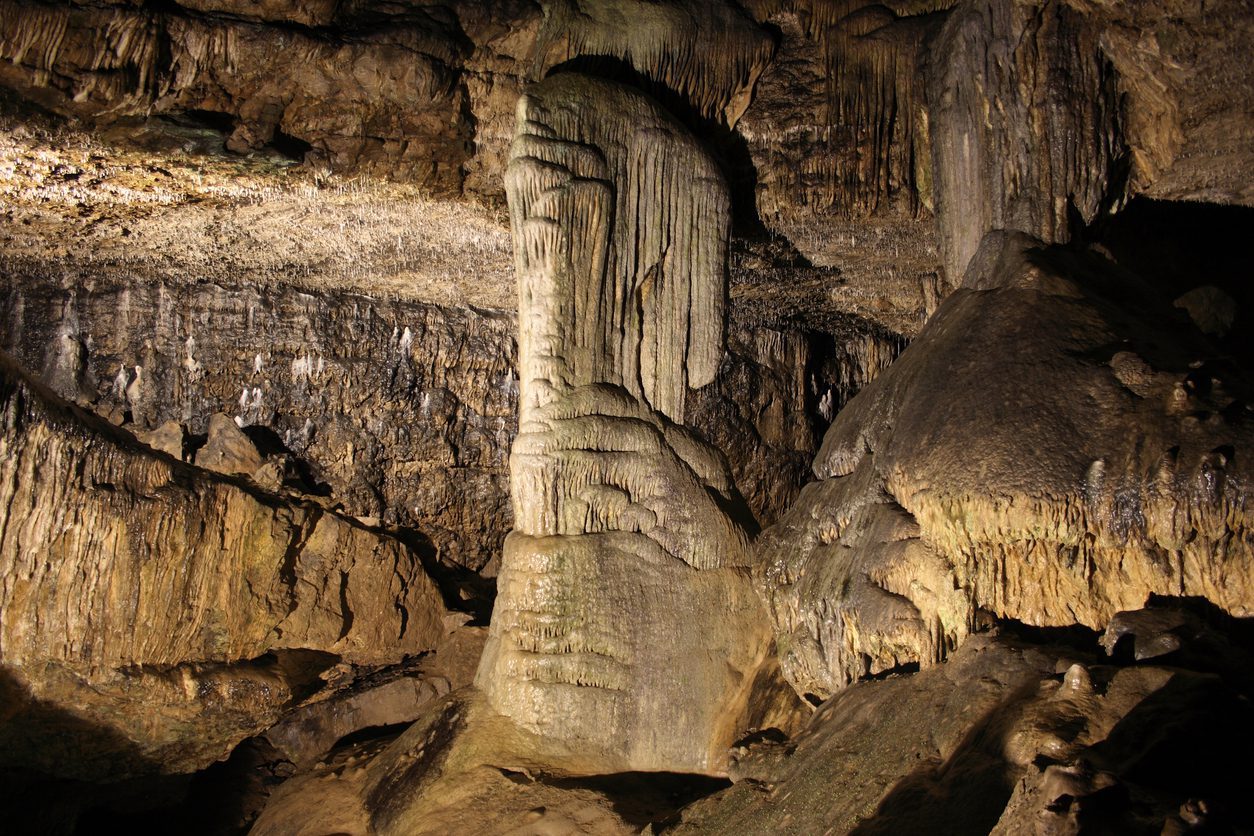Dunmore Cave is a cave system in County Kilkenny, Ireland, formed over millions of years by glacial meltwater chemically dissolving the permeable lower carboniferous limestone.
The cave is one of Ireland’s largest natural caves, running for around 402 metres to a depth of 46 metres. The interior contains numerous fine calcite formations, such as the Market Cross, a large calcite cross-shaped column that reaches a height of 5.8 metres.
The earliest historical reference to the cave is in the Trecheng Breth Féne “A Triad of Judgments of the Irish”, more widely known as “The Triads of Ireland”. The Triads are a series of manuscripts that date from the 14th to the 19th century AD, describing Dunmore Cave (written as “Dearc Fearna”) as one of “the three darkest places in Ireland”.
This may be in reference to events in the “Annals of the Four Masters”, a chronicle of medieval Irish history compiled between 1632 and 1636. The Annals record Dunmore Cave as being the site of a great Viking massacre during the year 10th century AD.
According to the text, Gofraid ua Ímair, a Hiberno-Scandinavian and Viking leader of Dublin, “demolished and plundered Dearc Fearna (Dunmore Cave), where one thousand persons were killed in this year as is stated in the quatrain: Nine hundred years without sorrow, twenty-eight, it has been proved, ‘Since Christ came to our relief, to the plundering of Dearc-Fearna.”
Archaeological evidence is unable to reliably confirm the events described in the Annals, however, large quantities of human bones have been recovered from the cave interior during an excavation in 1869. In 1973, archaeologists found further remains of 19 adults and 25 children, in addition to an associated hoard of silver coins dated to around AD 930.
According to one interpretation by archaeologist, Neil Jackman, the Vikings found a group of villagers taking shelter in the cave. Unable to force them out for capture, they lit large fires at the cave entrance that deprived them of oxygen. This resulted in the villagers slowly suffocating to death.
Header Image Credit : iStock





